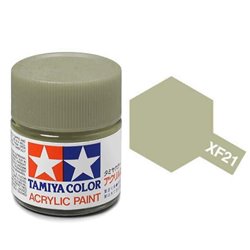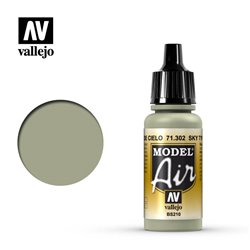Static grass puffer bottles work by manually charging model grass fibres with static electricity. When the charged...
No products
Product successfully added to your shopping cart
There are 0 items in your cart. There is 1 item in your cart.
Search Tips
What colour was the underside of a RAF Spitfire painted?
The underside colour of a Royal Air Force (RAF) Spitfire is an iconic aspect of its camouflage and getting it right can add significant authenticity to your scale model. During the Second World War, the Spitfire's underside colours changed depending on the specific theatre of operations, the time period and evolving camouflage standards. As a modeller, understanding these nuances can help you replicate a historically accurate finish that truly captures the essence of this legendary aircraft.
In the early stages of the war, the Spitfire's underside was painted in a striking black-and-white scheme, divided longitudinally along the aircraft's centreline. This high-contrast pattern was designed for rapid identification by friendly anti-aircraft units and other aircraft. For a scale model of a Spitfire from the Battle of Britain period, replicating this stark contrast using matt black and white paints can create an attention-grabbing display. Pay attention to the specific demarcation lines, as they were sometimes slightly uneven in reality due to the hurried application of paint during wartime.
By mid-1940, the underside of the Spitfire transitioned to a colour known as Sky Type S, a pale greenish-blue shade introduced as part of the RAF's standardised camouflage scheme. This change aimed to help aircraft blend into the sky when viewed from below. Many modellers interpret Sky differently, as its exact shade varied due to wartime production inconsistencies and environmental factors. Most model paint manufacturers, such as Tamiya and Vallejo, offer dedicated Sky colours, though some modellers prefer to mix their own to match period photographs or preserved aircraft.
Later in the war, particularly from 1941 onwards, Spitfires deployed in specific roles or regions featured different underside colours. Fighter-bombers or aircraft operating in desert environments often had undersides painted in a pale blue, like Azure Blue, to suit the harsh Mediterranean skies. For modelling, this offers an opportunity to showcase the versatility of the Spitfire by diversifying your collection with varied paint schemes. Be sure to research your chosen aircraft’s squadron and theatre of operation to select the correct colour.
When recreating the underside, smooth application and realistic weathering are crucial for a convincing model. Consider using airbrushing for a seamless finish, especially with lighter colours like Sky or Azure Blue, which can show brush marks more readily. To achieve a weathered look, incorporate subtle shading and washes to highlight panel lines and add areas of grime near maintenance hatches or exhaust outlets. This adds depth and a touch of realism that sets a model apart.
Finally, don't forget the decals and stencils on the underside. RAF Spitfires typically featured wing roundels and sometimes serial numbers in specific positions. Ensuring proper alignment and scale accuracy for these markings can elevate your model's authenticity. Use decal softeners and setting solutions to help the decals conform to panel lines and rivets, blending them naturally into the paintwork.
Taking the time to research and apply the correct underside colour, along with attention to the details, can make your Spitfire scale model a true representation of one of Britain’s most celebrated aircraft. It’s these finer points that often make scale modelling so rewarding!
Click here to receive the tips weekly in your mailbox. You can unsubscribe at any time.










